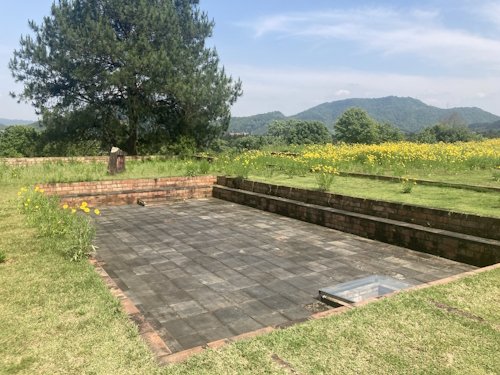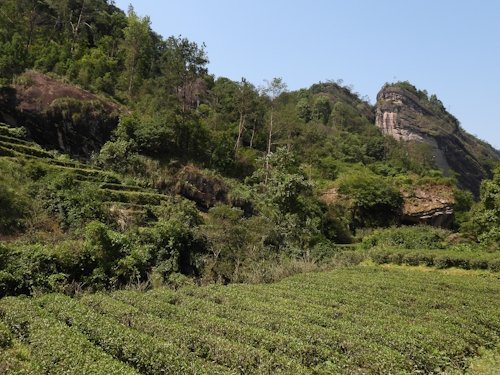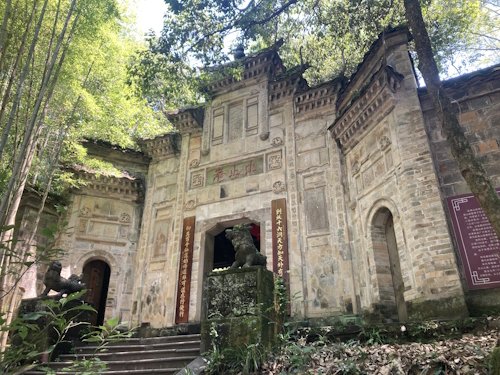The WHS of
Mount Wuyi
has not been covered well by reviews yet - at least I think they do not do justice to the complexity of this mixed WHS. After reading beforehand about what to see and do in the area I decided to spend more than one day here and explore various parts.
On my arrival day, I moved straight to the second location called “Ruin of Han Dynasty City”. This lies some 15km outside of the Wuyi scenic area. From Nanpingshi railway station (formerly known as Wuyishan East) I took the recently installed tramway and got off at Chengcun, from where it’s a 3km walk to the ruins (it’s signposted and you can use the bike path). It’s a location of interest in the inscription history of this WHS, as ICOMOS in 1999 actually considered it a separate site and thought it would be better to split this cultural archeological site from the more nature-focused main site.

The split didn’t happen though and now the Han City Ruins are part of the Wuyi WHS, and they proudly display the WH logo everywhere. Strangely, access regulations are different between the two locations – while the main site requires quite costly one or multiple-day passes, the entrance here is free. The ruins lie in a sleepy village and at the sites (I went to the museum and the palace ruins) no one else was around except for one person at each reception. The museum is quite a grand building and was modelled after Beijing’s Imperial Palace. The Han City dates from the 1st century BC and testifies to the time when the region became incorporated into the Han state and the local ruler became a vassal to the Han Emperor. These city ruins are considered unique for China as later constructions have never overlaid them. What remains though are hardly more than the foundations of what once was a walled city. Photo 1 above shows the ‘Bath Pool’.
The next morning I was up early and managed to be among the first to enter Wuyishan NP. The park opens already at 6.30 in the main season. For some reason, I only had to pay for the shuttle buses (70 Yuan (9 EUR), which even became 65 after an inexplicable Alipay discount) and not for the entrance (which is listed as 140 Yuan for 1 day). I had read online that they had given free entrance until April, but maybe they continue this practice.

I had chosen to visit the Da Hong Pao area first – it turned out that I was the only one wanting to go there at this early hour and I sat alone at the bus. That was fine by me as it resulted in a very pleasant and quiet hike. This area in the northern part of the park is known for its growing of tea plants. The so-called Tea Trail, 4.5km long, connects Da Hong Pao with the Water Curtain Cave via a narrow path through valleys and up and down stone stairs. The area was used as an Imperial Tea Farm and still produces a specific red kind of tea. A key spot is its remaining set of 6 original tea trees that are over 300 years old.
Along the way, you will also pass a fine 18th-century temple and ancient cliff dwellings high up against the cliff wall. As it was so quiet, I saw several birds such as a red-headed trogon and the very pretty Silver Pheasant (which is mostly white). The trail ends at the Water Curtain Cave, which is a steep waterfall that in this dry season only trickles from the top. Maybe it's not really worth the steep climb to get there, but there’s a Neo-Confucian shrine (infested with bees) at the bottom end of the wall so you can ‘tick’ the Neo-Confucian part of the OUV as well!

After 2 hours of hiking, I took a shuttle bus back to the main area near the park's South Entrance. Here I did another short walk: to Zhi Zhi An nunnery. This easy path starts at Wuyi Palace and follows the bending river. There’s a good viewpoint from where you can take pictures of the bamboo rafts floating downstream against the backdrop of the cliff walls.



